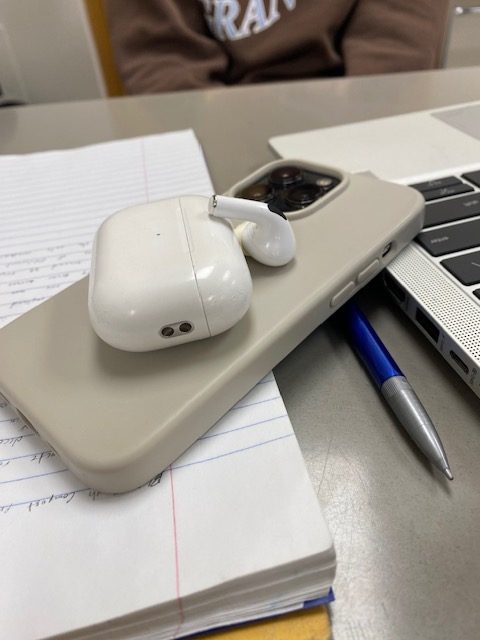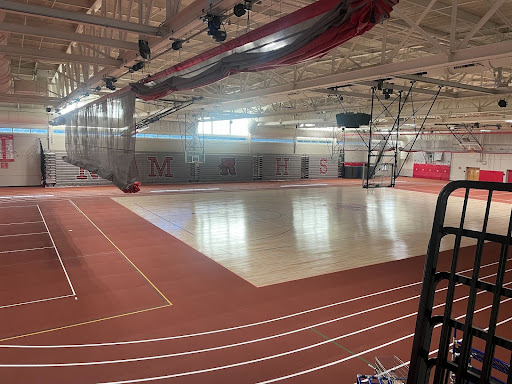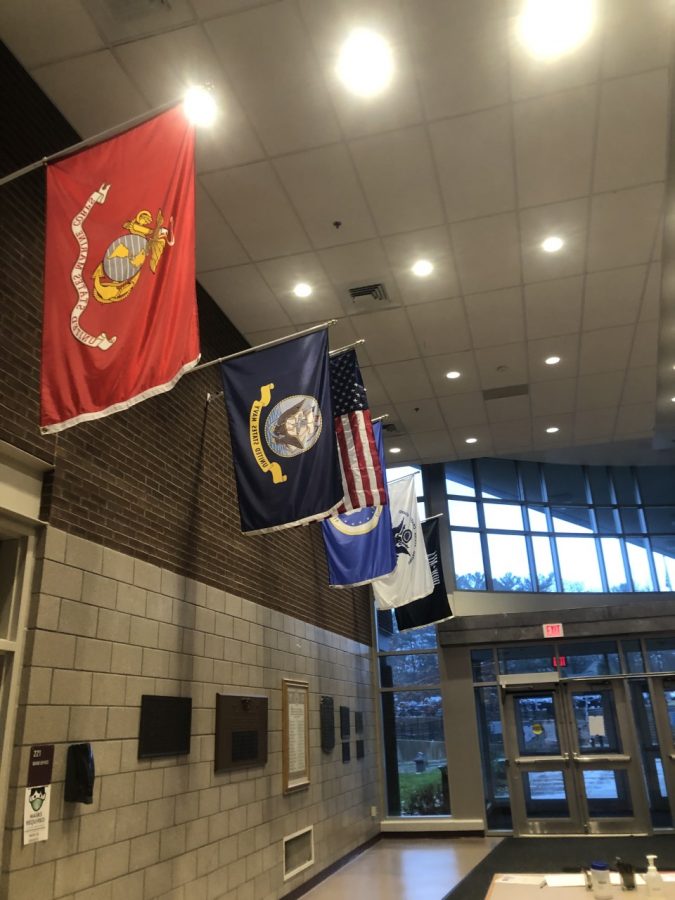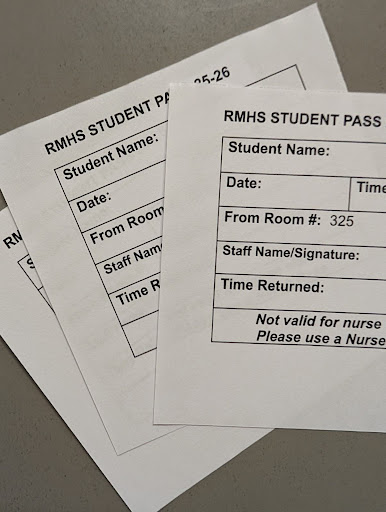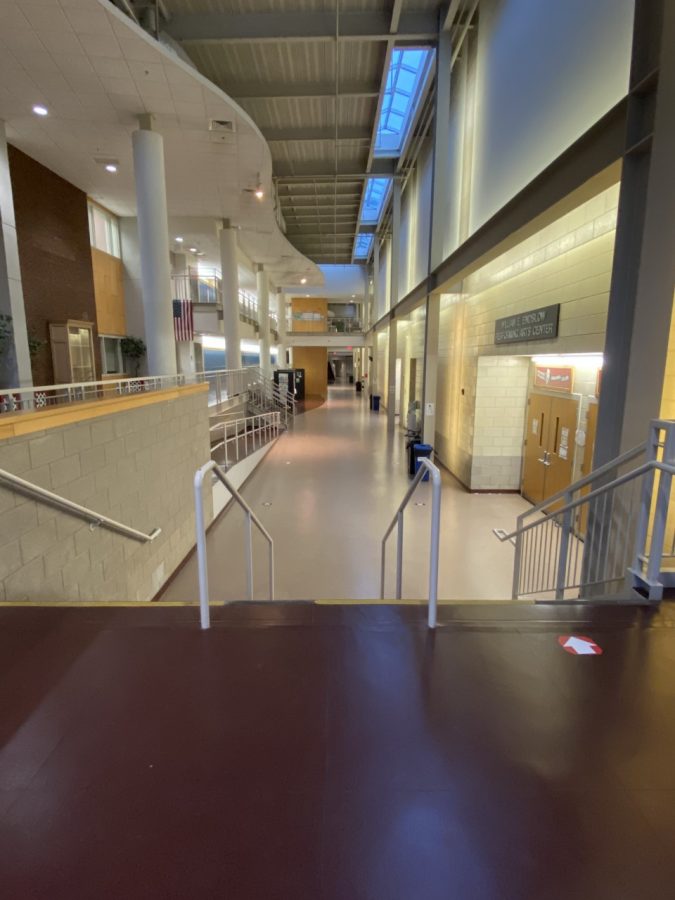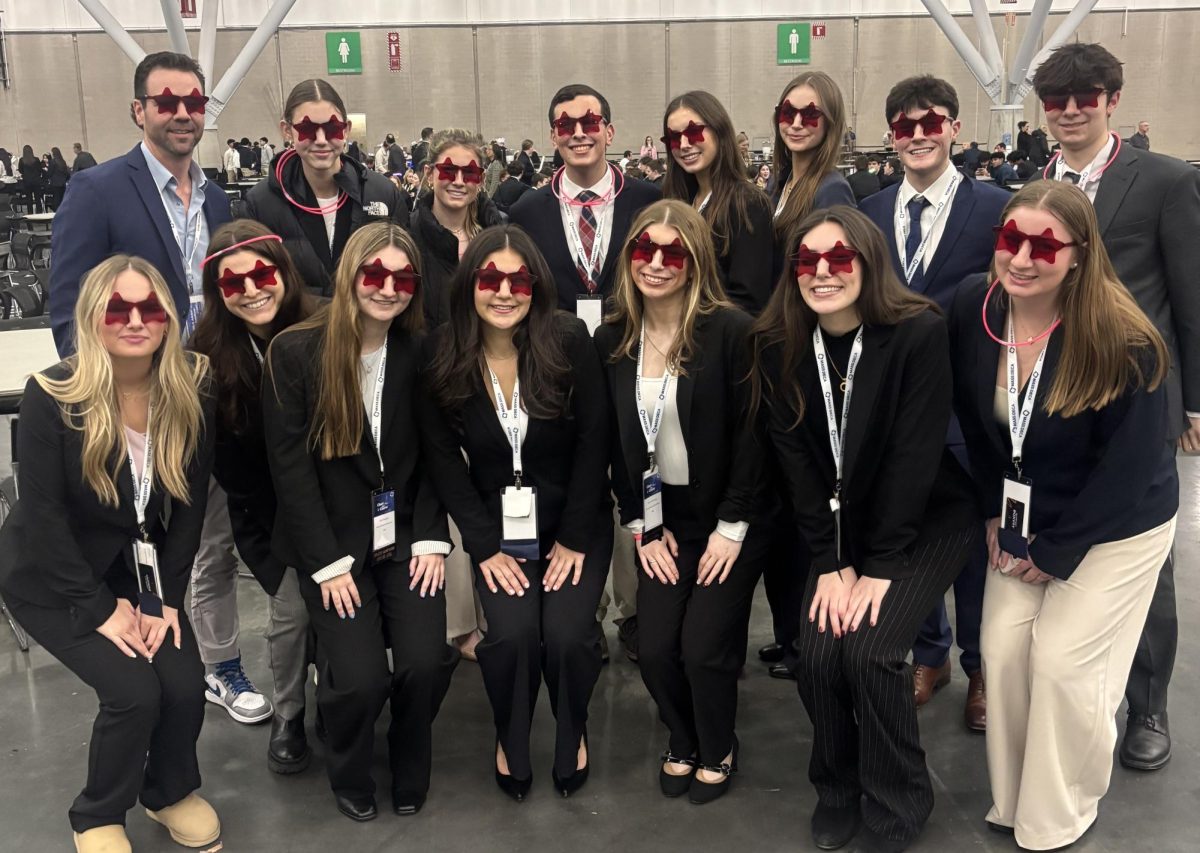With the recent surge in headphone usage throughout the school system, teachers and staff wonder if this shift is enhancing students’ ability to learn or contributing to a decline in academic engagement.
In the last few years, students have begun to carry headphones and airpods for use on school grounds. The minimalist style and flexibility of AirPods–which were first released by Apple in late 2016– have given students the room to mentally escape class unnoticed. While some teachers are lenient about music, many disapprove of what they see as a distraction and hold strong opinions on how students are being affected.
The article “Headphones in school: The rising disclosure of music in the modern classroom.” by Easton Atlansky of the Franklin Post, the high school newspaper of Franklin High School in Massachusetts, discusses this noticeable change in headphone use, along with teachers’ and students’ opinions on the matter. This story highlights the contrasting sides of the view of headphones, as well as phones in general. “The modern high school classroom is a sight to behold. Everywhere you turn there’s earpiece technology.” This statement from Atlansky’s article captures the current condition in high school. Atlansky’s work goes on to show off the clear difference between teachers’ perspectives. Some teachers support headphones and music, seeing them as tools to help students relax and focus during the school day. Other teachers, however, see them as a complete distraction, that they ruin student’s engagement and their ability to retain or learn in the classroom.
Some local teachers at RMHS have been asked similar questions about their views on headphones and airpods in the classroom setting. Mrs. Wells, a math teacher at RMHS, said, “When I’m teaching, I’d prefer they not, so that way they will hear the instructions, but when they’re doing independent work, it doesn’t bother me at all.” Wells’ belief in a compromise between teachers and headphone technology is shared amongst many staff and students.
There is a stigma, however, around having one AirPod in during class. Teachers see it as disrespectful while some students believe that keeping one ear open is enough. Mrs. Wells said, “I don’t call them out on it because my assumption is that it’s hopefully not on, if someone’s grade starts to slip, then I tend to try and ask them… what’s going on with that AirPod.” While teachers like Mrs. Wells find a middle ground with headphone use, others have a much stricter approach.
Mr. d’Entremont, a history teacher at RMHS had many things on his mind. He explains his skepticism of wearing headphones, but takes a complicated outlook on it all. “I want the full, you know, participation–100%. Not getting distracted.” Mr. d’Entremont expressed his concern about how much headphones can take away from student engagement. Yet he also understands that it can help students focus during class time. “There are certain times that things are appropriate and not appropriate as well.” He acknowledges that music can be helpful for certain students when they are working on their own, but it can also interfere with communication and class participation. Mr. d’Entremont questions whether students are able to juggle using headphones in class and staying attentive during discussions. He also has his concerns about the consequence of carrying this habit outside, into the real world. “Would they go to a job interview like that?” This question reflects his belief that the classroom expectations should prepare students for life beyond high school and in the professional world.
While the controversy continues over the use of headphones in schools, no easy solution seems to be coming anytime soon. Some educators see headphones as helpful tools for student focus, while others see them as a major distraction that inhibits learning and engagement. The growing presence of earpiece technology in schools raises issues about student responsibility, respect, and preparation for life after high school.
This debate will most certainly get more complicated as technology develops further into the student learning environment.
